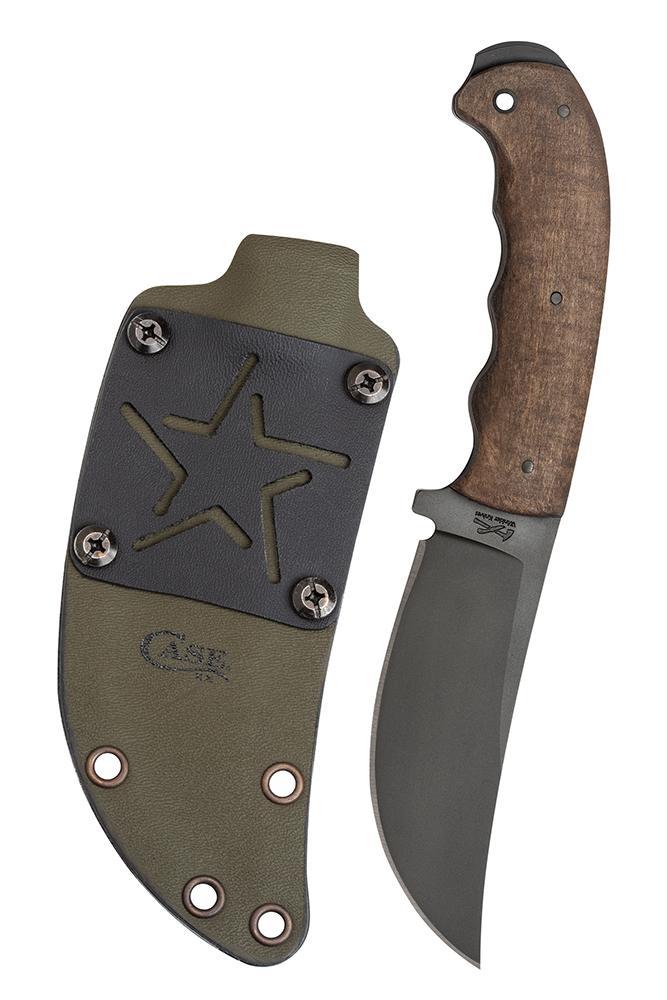One to Watch: Case/Winkler Hambone
Jon Stokes 12.04.18

We’ve been tracking the Case/Winkler collaborations for a few years now on AllOutdoor, and we’re always excited to see a new one come out. The third and latest installment in the series is the Hambone, a really nice-looking hunting and all-purpose blade.
There are a few things that interest me about the Case/Winkler Hambone, the first and most obvious of which is the trailing point. Most Winklers are drop-point, and the Skinner is really one of the only blades from him that I know of that isn’t. The Hambone, then, takes this even further with the point actually sweeping upwards above the midline of the blade.
Trailing points in the classic sense are hunting and skinning blades. They tend to lack a bit in the tip strength and stabbing departments, but make up for it in their increased ability to do fine detail work and delicate slicing, skinning, and caping. Given the standard parameters of the design, you don’t often see them on field knives, and pretty much never on tactical knives.
But the video that goes with the Case announcement for the knife shows them stabbing through a bunch of stuff, so I guess it works. And the reason is twofold: 1) blade thickness, and 2) the high-carbon, super tough 80CrV2 steel.
These new high-carbon super steels are incredibly strong, and it’s good to see makers taking advantage of that strength by doing things with the designs that you wouldn’t have seen a few years ago. The Case/Winkler skinner is a… er, case in point — it’s thinner than it has any right to be for a blade with its intended use profile, but the strength of the steel makes it work.
I think it’s probably the same with this trailing point on the Hambone. The Hambone itself is thick, and when you combine that with the steel you get a level of tip strength and stabbing ability that you wouldn’t normally find on a blade like that.
The second thing I’m intrigued by with the Hambone are the finger grooves. This can either really work or really not work, depending on execution. So I’m definitely going to be stopping by the Winkler booth at SHOT and handling this blade for myself, to get a feel for how well it fits larger hands.
Finally, the sheath looks really awesome. I know that the star on it is supposed to stand for the stars and stripes, but I live in the Lone Star State and that sheath has Texas written all over it.
Right now, the handle choices are curly maple and black canvas micarta. I’m really hoping they’ll offer a walnut option, because as much as I like curly maple and black canvas micarta, I really like Winkler’s untreated Walnut handles.
The only bad news here is the price: at $399, they definitely ain’t giving these away. Indeed, despite the fact that the blade is offered partly under the Case brand, this is basically a full-custom, so you’re paying a full-custom price for it. As with all the knives in this series, it’s a custom Winkler, but without the wait time.
Overall, following this series is one of my favorite things in the knife world right now. When a new one comes out, it’s like a new season of some show that you love. These are two great American knifemakers — Case and Daniel Winkler — teaming up with bona fide heroes to produce some of my favorite knives right now. What’s not to love?